Vaporizer Temperatures For Cannabis - The Ultimate Guide

One way to get to know your vaporizer well is to play around with the temperature settings. After all, it‘s pleasant research. But a slightly more scientific approach is to get to know the boiling points of the different cannabinoids, flavonoids, and terpenoids/terpenes, and understand how they work together to form your vaping experience.
Vaporizing cannabis can be a much better alternative to a joint. Vapor contains fewer harmful substances than smoke because, during vaporizing, no plant material is burned. This provides a purer experience so you can enjoy more of the “good stuff” in weed. However, setting the right temperature when vaporizing can make a big difference, not just for flavour, but also for your health.
Of course, smoking a good old joint is a timeless ritual, but vaporising has many benefits. For starters, as vaporizing doesn't combust your herb, you inhale fewer of the harmful toxins present in smoke, such as carbon monoxide, benzene, and formaldehyde.
Vaping also makes for a purer cannabis experience. The smoke from your joint only contains around 10% cannabinoids—the rest is a combination of unhealthy by-products. In contrast, Vapor clouds contain as much as 95% of the goodies from your weed. This makes vaping very pure and a lot more potent.
But know that when using a vaporizer, the right temperature setting can make all the difference!
Why is the right vaping temperature so important?
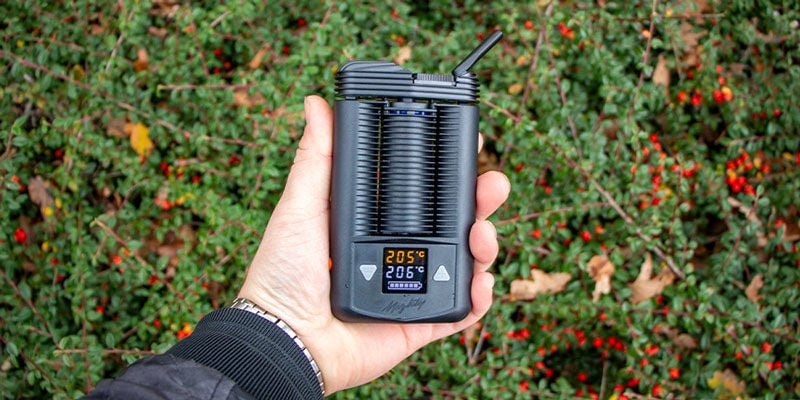
Setting your vaporizer to the right temperature is important for several reasons. If you set the temperature too low, you will miss out on flavour as well as potency. The crucial compounds found in cannabis and other herbs require a certain minimum temperature to evaporate. If your vaporizing temperature is set too low, you're not getting the full potential out of your precious buds or concentrate.
On the other hand, if you set your vaporizing temperature too high (especially at temperatures higher than 230°C (446°F), this can degrade active substances like terpenes and cannabinoids, and the plant material can actually burn. Not only will the potency and flavour of your vape be adversely affected, but you may also inhale more toxic compounds detrimental to your health.
Getting the most out of your herb
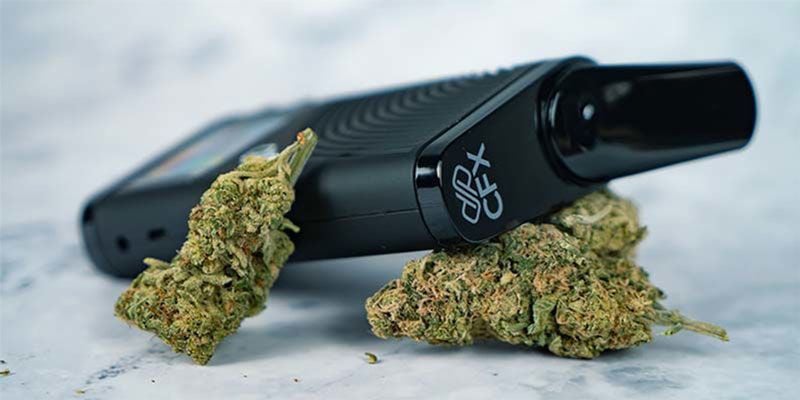
There are three types of compounds that, together, provide the aromas, flavours, and effects of your cannabis. These are flavonoids, cannabinoids, and terpenes/terpenoids. Exposing these chemicals to the perfect temperature will unlock all of the nuances of your chosen strain. But what is each group of compounds capable of when it comes to the vaping experience?
Flavonoids
Flavonoids are mainly responsible for giving plants their pigmentation. If you've seen eye-catching purple cannabis cultivars, for example, flavonoids are the reason behind those violet hues. Not only providing colour, flavonoids have also been studied for their anti-inflammatory and antioxidant potential. Hence, it's important to dial in the right temperature to really get the most out of them.
Cannabinoids
It's thought that there are over 100 naturally occurring cannabinoids in cannabis. Of course, the most well-known are THC and CBD. The former is the primary psychoactive compound available in cannabis and causes a “high”. The latter is non-intoxicating, but offers a variety of potential effects on well-being. But these are just two cannabinoids out of many, so finely tuning the temperature of your vaporizer acts to release all of the potential effects different cannabinoids have to offer.
Terpenoids and terpenes
Ever wonder why a strain tastes and smells the way it does? Well, you primarily have terpenoids and terpenes to thank. For example, beta-caryophyllene offers a spicy, woody flavour and aroma while limonene provides a zingy citrus taste. The temperature really makes or breaks your terpenoid/terpene experience when vaping; too high, and all the nuances will be dulled, and too low, and your returns will undoubtedly be diminished.
Is there such a thing as the “perfect” vaping temperature?
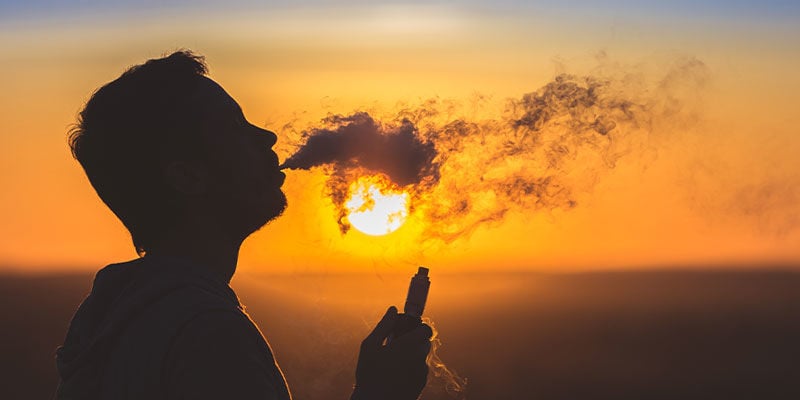
No, there is no singular perfect vaping temperature. However, the optimal temperature range for cannabis is generally considered to be from 180–210°C.
While experimentation with different temperatures will help you to discover the vape settings that suit you best, it's worth noting that the optimal temperature for THC is 185°C. Temperatures below 190°C tend to produce a more cerebral high, and temperatures above this tend to produce a more body-based high. It's likely that this difference is caused by the different terpenes that evaporate at these temperatures.
Cannabinoid temperature guide
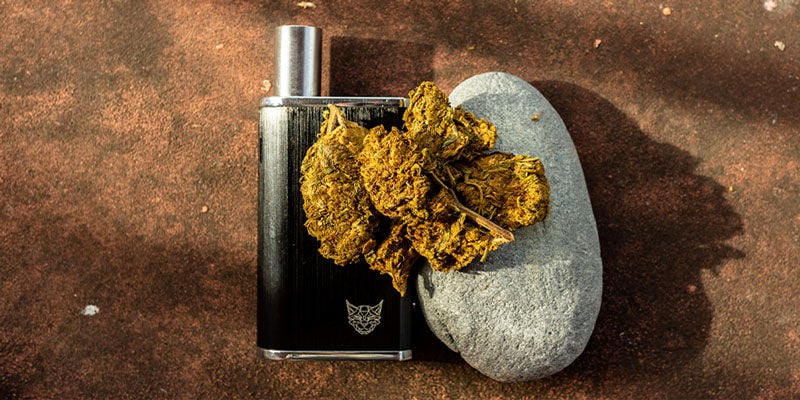
The temperature range in which the major cannabinoids evaporate lies between 157–220°C. As all cannabinoids have different boiling points, vaporizing the same bowl of herb at different temperatures will generate different results. As mentioned, the experience can be categorised as either primarily cerebral or physical, with lower temperatures promoting the former and higher temperatures promoting the latter.
| Compound | °C | Information |
| THC | 157°C | THC is the most famous of all the cannabinoids. It has both euphoric and relaxing effects. |
| CBD | 170°C | Famous for its versatility and non-psychotropic nature, CBD is also thought to modulate the effects of THC. |
| Delta-8-THC | 175°C | This cannabinoid is very similar to THC, but it is more stable and less psychoactive. |
| CBN | 185°C | CBN results from THC’s degradation and has a soothing, non-intoxicating effect. |
| CBC | 220°C | Cannabichromene is one of the main cannabinoids found in cannabis, stemming from “mother cannabinoid” CBGA, just like CBD and THC. |
| THCV | 220°C | THCV has been shown to moderate the psychoactive effects of THC, but more research is required. |
Flavonoid Temperature Guide
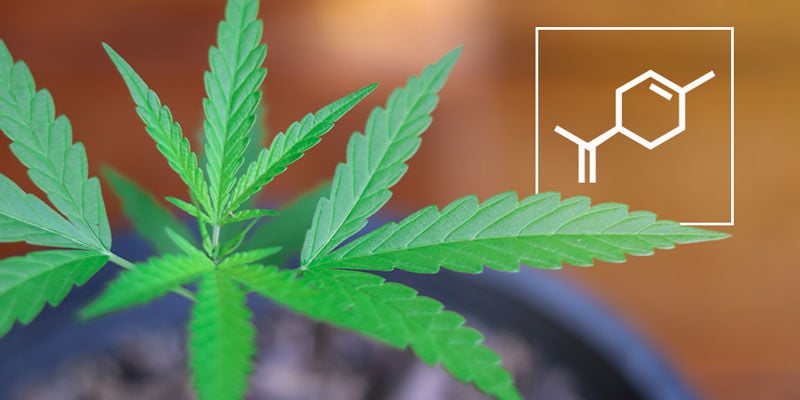
Along with terpenoids and terpenes, flavonoids are little-known compared to the famed cannabinoids. Flavonoids are a large class of plant pigments that are sometimes referred to as vitamin P, and are partly responsible for the colour of a particular strain.
The following outlines the temperatures at which various flavonoids vaporize.
| Compound | °C | Information |
| Beta-sitosterol | 134°C | This flavonoid can be found in nuts and avocados, as well as cannabis. |
| Apigenin | 178°C | A flavonoid found in chamomile tea, apigenin exerts soothing and possible sleep-promoting properties. |
| Cannflavin A | 182°C | This flavonoid is a COX inhibitor. |
| Quercetin | 250°C | With its bitter taste, this flavonoid is continually being studied for its potential use as a natural care product. |
Terpenoid Temperature Guide
As touched upon earlier, terpenoids and terpenes contribute to what gives cannabis plants, and many other plants, their unique aromatic qualities. The scents of cinnamon, cloves, and menthol, for example, all derive from terpenoids. But terpenes and terpenoids not only influence the aroma and flavour of cannabis and other plants, but also their effects. In fact, one of the strongest known naturally occurring psychedelic compounds, Salvinorin A from the Salvia divinorum plant, is a terpenoid.
The following outlines the boiling points of various terpenoids.
| Compound | °C | Information |
| Beta-caryophyllene | 130°C | Found in natural oils, beta-caryophyllene has antioxidant and relaxing properties. |
| Alpha-terpinol | 156°C | This terpenoid may offer soothing feelings of relaxation. |
| Beta-myrcene | 168°C |
A naturally occurring oil found in plants such as cannabis, beta-myrcene is often used in fragrances. |
| Delta-3-myrcene | 168°C | A terpenoid with potential soothing effects. |
| 1,8-cineole | 176°C | A naturally produced compound found in eucalyptus oil with potential stimulating effects. |
| D-limonene | 177°C | D-limonene appears naturally in cannabis. |
| P-cymene | 177°C | Found in herbs like thyme, p-cymene has a pleasant scent and efficiently fights microbial pests. |
| Linalool | 198°C | A naturally occurring terpenoid used in many products for its floral scent; features potential mood-boosting qualities. |
| Terpinol-4-ol | 209°C | This terpenoid can be found in tea tree oil and has a soothing scent. |
| Borneol | 210°C | With an earthy and minty aroma, this terpenoid has relaxing properties and can support healthy digestion. |
| Alpha-terpineol | 217°C | This terpenoid found in tea offers feelings of relaxation. |
| Pulegone | 244°C | Pulegone is a sedative and potentially has memory boosting properties. |
Does dry or moist bud make a difference?
Unlike when you're using a bong or smoking a joint, bone-dry cannabis can still be a delight in a vaporizer. However, because it is so dry, it will vaporize much faster. And if it is too hot, you run the risk of flash-boiling the active ingredients, eliminating the flavour very rapidly.
As it largely depends on the situation and cannabis strain you're using, there is no definitive guide on to how to properly vaporize particularly dry weed; but as a rule of thumb, you will want to reduce the temperature slightly from your norm.
Conversely, if your bud is very high in moisture, it can sometimes be hard to release the cannabinoids and other compounds. After all, that water needs to boil out before the other compounds can take their turn. To deal with this, it is recommended to do what‘s called a "flavonoid run". By using a vaporizer at a lower temperature (around 138–148°C), it is possible to slowly dry out your cannabis a bit. After this run, your cannabis should be dry enough to vaporize efficiently at the temperatures mentioned for THC and other cannabinoids.
Is vaping better for you than smoking?
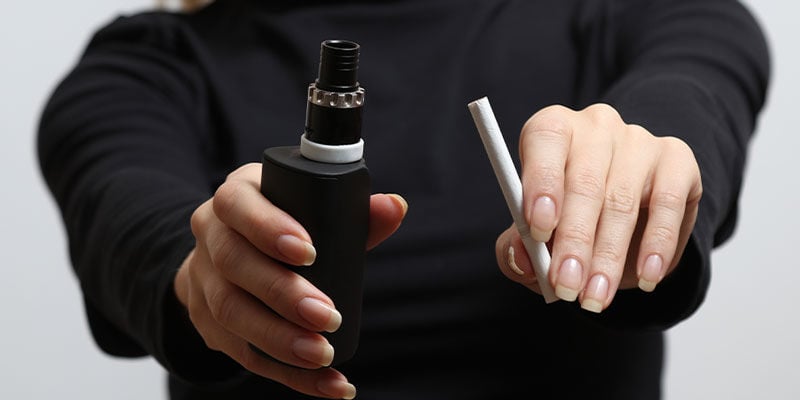
It's a common question; is vaping weed better than smoking it? While we've touched upon some benefits, such as fewer toxins present in vaping than smoking, there's not enough evidence to suggest that one outweighs the other when it comes to being “better” for you. Of course, there is some evidence (Spindle et al., 2018) which suggests that vaping can be a more intense experience for the user. However, both methods are the same when it comes to onset of effects, taking around 10–15 minutes to reach their peak.
The flavour experience is also bound to play a massive role in your enjoyment of cannabis. Many users often state that smoking largely destroys the natural flavour and aroma. On the other hand, many modern vaporizers make it easy to dial in a temperature that will really bring out the flavours, aromas, and effects of your chosen strain.
Dial in the perfect vaping temperature today
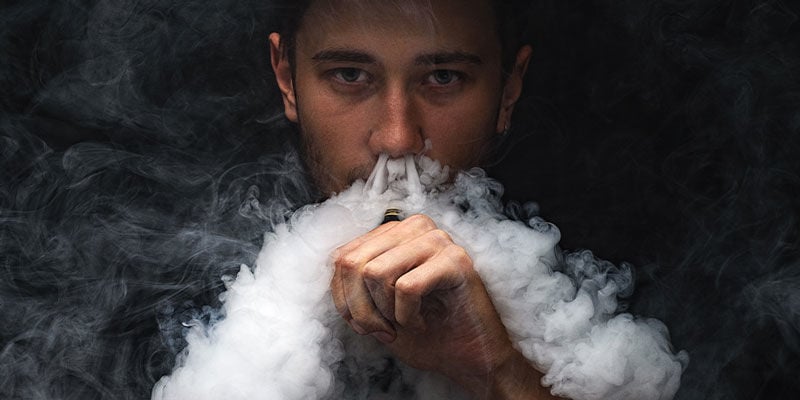
As you can tell by this point, there are plenty of factors that influence the vaping experience. That said, it's easy to get the most out of your chosen strain by fine-tuning your temperature. Experimenting with different temperatures will allow you to experience the same strain in different ways, so don't be afraid to mix things up a bit! Also, it's worth noting that by gradually increasing the temperature of your vaporizer you can use your cannabis several times. There's still plenty of compounds to make the most of.
Of course, having a reliable vaporizer is half the battle, so if you you're in the market for an upgrade or picking up your very first vaping device, you're in the right place. Head over to the Zamnesia Vaporshop and get your pick of the best vaporizers available on the market today. With an array of features and budget-friendly prices, it's never been easier to get paired with a high-performing device. And if you're looking for the best herbs to try with it, we've got you covered there too!
- Tory R. Spindle, Edward J. Cone, Nicolas J. Schlienz, John M. Mitchell, George E. Bigelow, Ronald Flegel, Eugene Hayes, & Ryan Vandrey. (2018/11/02). Acute Effects of Smoked and Vaporized Cannabis in Healthy Adults Who Infrequently Use Cannabis: A Crossover Trial - https://jamanetwork.com





 United States
United States











